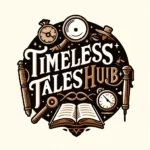“Eugene Field’s Nonsense for Old and Young is a delightful exploration of whimsy and wit, wrapped in the gentle cloak of playful verse and lighthearted prose. This collection, as with much of Field’s work, dances between the realms of the absurd and the profound, creating an engaging experience for readers of all ages.
The book opens with a series of short poems that play with language in an almost cheeky manner. Field’s mastery of rhythm and rhyme is evident as he bends words to his will, crafting poems that are as rhythmic and fluid as they are nonsensical. One can imagine the smirks and half-chuckles these poems would elicit from an audience gathered by the hearth.
In ‘The Duel,’ for example, Field tells the humorous tale of a gingham dog and a calico cat, whose ferocious battle ends in mutual destruction. The irony is not lost on the reader, as Field uses this absurdity to comment on the futility of conflict, a theme as relevant to adults as it is portrayed humorously for children.
Another notable piece, ‘Wynken, Blynken, and Nod,’ transforms a simple bedtime poem about three children sailing and fishing among the stars into a deeper reflection on the innocence of youth and the nature of dreams. This poem, arguably the most famous from the collection, showcases Field’s ability to weave complex ideas into simple narratives.

Field also indulges in the creation of bizarre and fantastical characters, from mischievous elves to wise old kings who rule over lands that obey no logic but that of dream and whim. These stories are interspersed with drollery and a keen sense of satire, poking fun at the solemnities of adult life through the lens of childlike wonder.
Moreover, Field’s collection is peppered with what might be seen as commentary on societal norms and behaviors, delivered so subtly through his nonsensical tales that they might be missed on a cursory read. This subtlety adds a layer of depth to what might otherwise be dismissed as mere children’s literature.
As the pages turn, the tone shifts ever so slightly from the overtly playful to the subtly ironic, culminating in pieces that reflect on life’s end with a whimsical yet poignant touch. This blend of humor and reflection, of playful surface and deeper undercurrent, invites readers to find joy and meaning in the nonsensical.
In conclusion, Nonsense for Old and Young by Eugene Field is a gem of literary artistry, demonstrating that nonsense is not devoid of sense but is instead a vessel for exploring the deeper truths of human experience. It is a book that promises laughter and perhaps a tear, leaving both old and young richer for having read it.”


